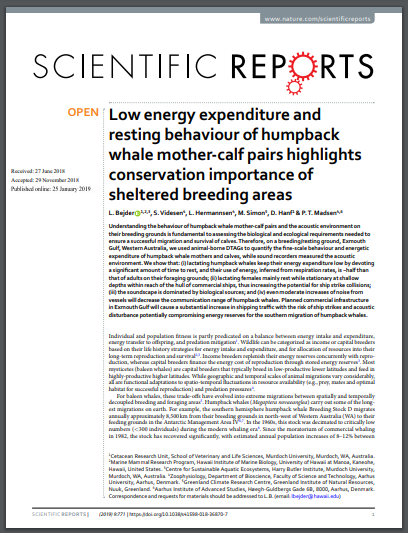
Understanding the behaviour of humpback whale mother-calf pairs and the acoustic environment on their breeding grounds is fundamental to assessing the biological and ecological requirements needed to ensure a successful migration and survival of calves. Therefore, on a breeding/resting ground, Exmouth Gulf, Western Australia, we used animal-borne DTAGs to quantify the fne-scale behaviour and energetic expenditure of humpback whale mothers and calves, while sound recorders measured the acoustic environment.
Links
Publication














